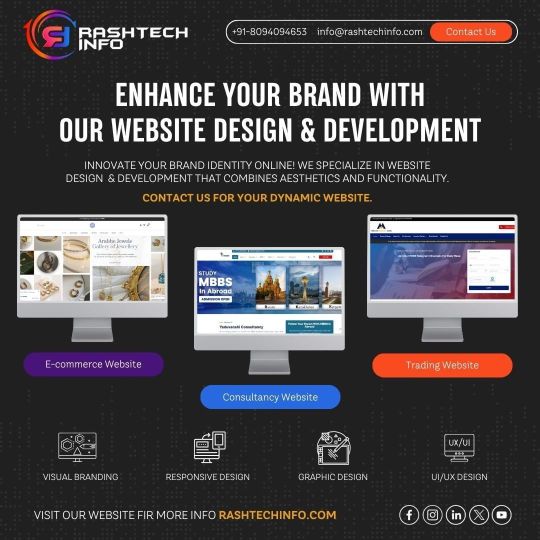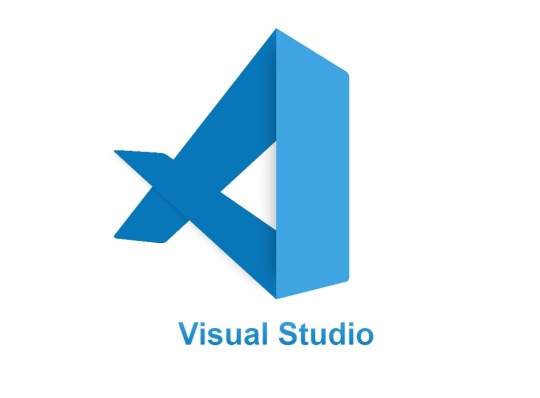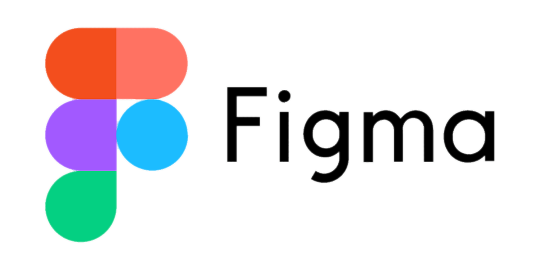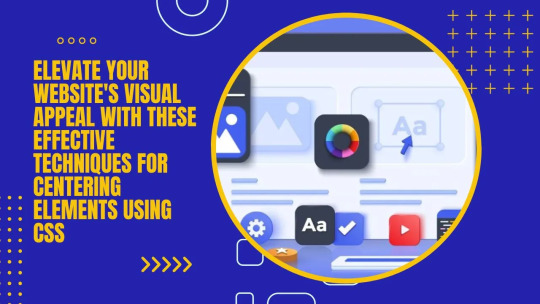#Best web Design Company in US
Explore tagged Tumblr posts
Text
#Web Design Psychology#Web Design Company in US#Best Web Design Company in US#Web Design and Development Company in US#United States#California#Texas#Houston
0 notes
Text
0 notes
Text
Top Custom Web App Development Company Near You
Zyneto Technologies is a trusted web app development company, providing best and custom web development services that specifically fulfill your business goals. Whichever website developers near me means to you or global partners you’ll gain access to a team of scalable, responsive, and feature rich web development solutions. We design intuitive user interfaces, build powerful web applications that perform seamlessly, providing awesome user experiences. Our expertise in modern technologies and framework enables us to design, develop and customize websites /apps that best fit your brand persona and objectives. The bespoke solution lines up to whether it is a startup or enterprise level project, the Zyneto Technologies delivers robust and innovative solution that will enable your business grow and succeed.
Zyneto Technologies: A Leading Custom Web Development and Web App Development Company
In the digital age, having a well-designed, high-performing website or web application is crucial to a business’s success. Zyneto Technologies stands out as a trusted web app development company, providing top-tier custom web development services tailored to meet the specific goals of your business. Whether you’re searching for “website developers near me” or partnering with global experts, Zyneto offers scalable, responsive, and feature-rich solutions that are designed to help your business grow.
Why Zyneto Technologies is the Top Custom Web Development Company Near You
Zyneto Technologies is a highly regarded name in the world of web development, with a reputation for delivering custom web solutions that perfectly align with your business objectives. Whether you're a startup looking for a personalized web solution or an established enterprise aiming for a digital overhaul, Zyneto offers custom web development services that deliver lasting value. With a focus on modern web technologies and frameworks, their development team crafts innovative and robust web applications and websites that drive business growth.
Expert Web App Development Services to Match Your Business Needs
As one of the leading web app development companies, Zyneto specializes in creating web applications that perform seamlessly across platforms. Their expert team of developers is proficient in designing intuitive user interfaces and building powerful web applications that provide a smooth and engaging user experience. Whether you require a custom website or a sophisticated web app, Zyneto’s expertise ensures that your digital solutions are scalable, responsive, and optimized for the best performance.
Tailored Custom Web Development Solutions for Your Brand
Zyneto Technologies understands that every business is unique, which is why they offer custom web development solutions that align with your brand’s persona and objectives. Their team works closely with clients to understand their vision and create bespoke solutions that fit perfectly within their business model. Whether you're developing a new website or upgrading an existing one, Zyneto delivers web applications and websites that are designed to reflect your brand’s identity while driving engagement and conversions.
Comprehensive Web Development Services for Startups and Enterprises
Zyneto Technologies offers web development solutions that cater to both startups and large enterprises. Their custom approach ensures that every project, regardless of scale, receives the attention it deserves. By leveraging modern technologies, frameworks, and best practices in web development, Zyneto delivers solutions that are not only technically advanced but also tailored to meet the specific needs of your business. Whether you’re building a simple website or a complex web app, their team ensures your project is executed efficiently and effectively.
Why Zyneto Technologies is Your Ideal Web Development Partner
When searching for "website developers near me" or a top custom web app development company, Zyneto Technologies is the ideal choice. Their combination of global expertise, cutting-edge technology, and focus on user experience ensures that every solution they deliver is designed to meet your business goals. Whether you need a custom website, web application, or enterprise-level solution, Zyneto offers the expertise and dedication to bring your digital vision to life.
Elevate Your Business with Zyneto’s Custom Web Development Services
Partnering with Zyneto Technologies means choosing a web development company that is committed to providing high-quality, customized solutions. From start to finish, Zyneto focuses on delivering robust and innovative web applications and websites that support your business objectives. Their team ensures seamless project execution, from initial design to final deployment, making them a trusted partner for businesses of all sizes.
Get Started with Zyneto Technologies Today
Ready to take your business to the next level with custom web development? Zyneto Technologies is here to help. Whether you are in need of website developers near you or a comprehensive web app development company, their team offers scalable, responsive, and user-friendly solutions that are built to last. Connect with Zyneto Technologies today and discover how their web development expertise can help your business grow and succeed.
visit - https://zyneto.com/
#devops automation tools#devops services and solutions#devops solutions and services#devops solution providers#devops solutions company#devops solutions and service provider company#devops services#devops development services#devops consulting service#devops services company#web scraping solutions#web scraping chrome extension free#web scraping using google colab#selenium web scraping#best web scraping tools#node js web scraping#artificial intelligence web scraping#beautiful soup web scraping#best web scraping software#node js for web scraping#web scraping software#web scraping ai#free web scraping tools#web scraping python beautifulsoup#selenium web scraping python#web scraping with selenium and python#web site development#website design company near me#website design companies near me#website developers near me
0 notes
Text

RashTech Info: Where Imagination Meets Design in Graphics
RashTech Info, where creative visions converge with cutting-edge design in graphics. Unleash your imagination through innovative solutions and captivating visuals. Discover a dynamic platform where design meets technology, inspiring limitless possibilities. Join us on a journey where imagination thrives, shaping the future of graphic innovation.
#Graphics designing website in US#web designing company#best UI/UX designing website#Brand Kit#video editing#graphic designer near me
0 notes
Text

#Expert Web Designing#A Website Designing Company in Ahmedabad is a full service Digital Marketing Company in Ahmedabad#Providing excellent digital solutions over 12+ years. Our custom solutions are made to fulfill each client’s unique goals#empowering our partners to use the web to its full potential while exceeding expectations along the way. As a Best Web Development Company#we have the experience and specialized knowledge to deliver outstanding solutions for regulation compliance heavy industries. We also provi#Master in Digital Markeitng Course in Ahmedabad#Search Engine Optimization Course in Ahmedabad#WordPress Course in Ahmedabd & lot.#At Expert Web Designing#our bespoke Web Designing#Digital Marketing & all services are always tailored to suit the needs of each client. Whether we are updating an existing function or crea#we combine creativity with technological know-how. We will help your business grow to new heights through qualified online exposure. We put#strategies and proven conversion techniques. Our experience#coupled with our passion#has afforded us the opportunity to maintain long-term relationships with our clients. Partnering with us will help your business succeed an#and at the same time#keep our fees affordable
1 note
·
View note
Text


In the rapidly evolving landscape of mobile app development, businesses are seeking innovative and efficient solutions to stay ahead of the curve. One technology that has gained significant traction is Flutter, a versatile and powerful framework for building cross-platform mobile applications. As the demand for seamless user experiences grows, businesses are turning to the expertise of a trusted mobile app development company in the USA to harness the full potential of Flutter app development services.
#android app development company in usa#mobile app development company in usa#flutter app development services#hybrid app development framework#best app development software#best graphic designer services#best application development company#app development services usa#web and mobile development company#iphone app development usa#ios development companies in usa#android app development company us#mern stack developer services#flutter app development at top
0 notes
Text
Enhancing the Real Estate Experience: Isynbus - Your Premier Real Estate Mobile App Development Company
In today's digital age, the real estate industry has witnessed a significant transformation. Real estate mobile applications have become an integral part of this evolution, offering convenience, efficiency, and enhanced experiences to both property buyers and sellers. If you're in the real estate business and looking for a reliable partner to develop a cutting-edge mobile application, look no further than Isynbus, your premier real estate app development company. In this blog, we will explore the world of real estate mobile applications and how Isynbus can help you turn your vision into a reality.
The Rise of Real Estate Mobile Applications
The real estate industry has come a long way from traditional methods of property hunting and transactions. The days of poring over newspapers and physically visiting numerous properties are gradually fading away. Instead, modern consumers are turning to real estate mobile applications to streamline their property search, buying, and selling processes.
The reasons behind this shift are evident. Real estate apps offer users a plethora of benefits:
1. Convenience: With a real estate app in their pocket, users can access property listings, schedule viewings, and even complete transactions from the comfort of their own homes.
2. Efficiency: Mobile apps provide quick and easy access to a vast database of properties, allowing users to filter and sort listings based on their preferences, budget, and location.
3. Enhanced Experience: Features like virtual property tours, high-quality images, and detailed property descriptions provide a richer and more informative experience for both buyers and sellers.
4. Real-Time Updates: Real estate apps offer real-time notifications on new listings, price changes, and other relevant updates, ensuring users stay informed.
5. Paperless Transactions: The digitalization of transactions through real estate apps eliminates the need for excessive paperwork, making the process faster and eco-friendly.
Isynbus: Your Trusted Real Estate App Development Partner
Isynbus is a name synonymous with innovation and expertise in the realm of real estate mobile applications. As a dedicated real estate app development company, we understand the unique demands of the industry and have honed our skills to deliver tailored solutions. Here's why you should choose us to turn your real estate app idea into reality:
1. Expertise: With a team of experienced developers and designers, we have a deep understanding of the real estate industry's nuances. We can create a feature-rich app that caters to your specific needs.
2. Custom Solutions: At Isynbus, we don't believe in one-size-fits-all solutions. We work closely with you to understand your goals and vision, ensuring that the app we build aligns perfectly with your business objectives.
3. User-Centric Approach: Our primary focus is on creating apps that provide an exceptional user experience. We incorporate user-friendly interfaces, intuitive navigation, and cutting-edge features to keep users engaged.
4. Cutting-Edge Technology: Isynbus stays at the forefront of technological advancements. We leverage the latest tools and frameworks to build robust and scalable real estate mobile applications.
5. Data Security: We understand the importance of data security in the real estate industry. Our apps are designed with strong encryption and security measures to protect sensitive information.
6. Post-Launch Support: Our commitment doesn't end with the launch of your real estate app. We provide ongoing support and maintenance to ensure your app remains up-to-date and runs smoothly.
7. Cost-Effective Solutions: We offer competitive pricing without compromising on quality. Our goal is to provide you with a high-quality real estate app that fits your budget.
Key Features of Real Estate Mobile Applications
Isynbus specializes in creating real estate apps that are feature-rich and tailored to meet your business requirements. Here are some key features commonly found in real estate mobile applications:
1. Property Listings: An extensive database of property listings with detailed information, images, and virtual tours.
2. Advanced Search: Filters for location, price range, property type, and more, to help users find their ideal property.
3. User Profiles: User accounts that allow buyers and sellers to manage their listings, save favorites, and track their transaction history.
4. Geolocation and Maps: Integration with maps for property location, nearby amenities, and neighborhood information.
5. Virtual Tours: High-quality 360-degree virtual property tours, providing an immersive experience for potential buyers.
6. Notifications: Real-time alerts for new listings, price changes, and appointment scheduling.
7. Mortgage Calculators: Tools to help users estimate mortgage payments and affordability.
8. Chat and Messaging: In-app communication for buyers, sellers, and agents.
9. Reviews and Ratings: User-generated feedback and ratings for properties and agents.
10. Secure Payment: A secure payment gateway for transaction processing.
Conclusion:
The real estate industry is evolving, and real estate mobile applications have become a vital tool for success. Isynbus, your trusted real estate app development company, is here to turn your real estate app idea into a reality. With our expertise, user-centric approach, and commitment to excellence, we can help you create a feature-rich and user-friendly mobile app that sets you apart in the competitive real estate market.
Don't miss out on the opportunity to provide your customers with a modern, convenient, and efficient way to engage with your real estate services. Contact Isynbus today to start the journey towards a successful real estate mobile application that can transform your business.
#app development company#web design company in us#best digital marketing company in uk#digital agency uk#digital marketing agency london
0 notes
Text
#digital marketing service provider in us#best digital marketing agency#artificial intelligence service provider in us#web design and development company in us#digital marketing agency#app design and development companies in us#affordable web design companies in us#website development company usa#ad campaigning service provider in us#brand building and logo creation company
0 notes
Text
#web development company#web development company London#web development company in UK#web development company in#united kingdom#design web development company#web development company near me#best web development company#web development company manchester#web design company new york#web development for business#services of web development company#web development company about us#web development company us#Usa web development company#web development company Canada#web development company in California
0 notes
Text
Best Website Development Company in USA
Webslogin IT Services Private Limited is a leading Best website development company in USA. With a stellar track record, they offer top-notch web solutions, tailored to meet clients' specific needs. Their team of skilled professionals excels in crafting user-friendly, responsive, and visually appealing websites. They provide a comprehensive range of services, including web design, development, e-commerce solutions, and SEO optimization. Webslogin IT Services strives for excellence, ensuring client satisfaction through innovative solutions, timely delivery, and exceptional customer support. With their expertise, businesses can enhance their online presence and achieve remarkable success in the digital landscape.
#best website development company in usa#web designing usa#best graphic designing company in usa#top graphic design companies in us#social media optimization services usa#top smo company in usa#search engine optimisation service
1 note
·
View note
Text
Top 7 Tools for Front-end Web Development

Front-end web development has evolved significantly over the years, and with it, a plethora of tools have emerged to make the process smoother, more efficient, and visually appealing. These tools empower developers to create stunning user interfaces, enhance user experience, and optimize website performance. In this article, we'll explore the top 7 tools for front-end web development that are essential for modern web projects.
1. Visual Studio Code (VS Code):
Visual Studio Code, commonly known as VS Code, is a versatile and powerful code editor developed by Microsoft. With its rich features and extensive extensions, it has become the preferred choice for front-end developers. Its built-in Git integration, IntelliSense, debugging capabilities, and support for multiple programming languages make it an indispensable tool for coding, debugging, and collaboration. Hire Megatask Web for Web Design and Development Service.

2. React:
React, a JavaScript library developed by Facebook, is widely used for building dynamic and interactive user interfaces. It allows developers to create reusable UI components, making the development process efficient and scalable. With its virtual DOM and one-way data binding, React ensures optimal performance and responsiveness in web applications.

3. Bootstrap:
Bootstrap is a popular front-end framework that provides a collection of pre-designed components, layouts, and styles to expedite web development. It offers a responsive grid system, typography, and CSS classes for rapid prototyping and consistent design. Bootstrap's documentation and ease of use make it an excellent choice for both beginners and experienced developers.

4. Sass (Syntactically Awesome Style Sheets):
Sass is a powerful CSS preprocessor that enhances the capabilities of traditional CSS. It introduces variables, mixins, nested rules, and more, making the process of writing and maintaining CSS code more efficient. Sass enables developers to create reusable styles, streamline code organization, and achieve consistent design across projects. Click Here for Best Web Design Company in US

5. Webpack:
Webpack is a module bundler that simplifies the management of assets, such as JavaScript files, stylesheets, and images. It enables developers to bundle, minify, and optimize assets for production, improving website performance. Additionally, Webpack supports hot module replacement, allowing developers to see changes in real-time without reloading the entire page.

6. Figma:
Figma is a collaborative design tool that facilitates the creation of visually appealing user interfaces. It allows designers and developers to work together in real-time, streamlining the design-to-development process. Figma's responsive design features, prototyping capabilities, and shared libraries make it an invaluable tool for creating cohesive and user-centric designs. Visit https://megataskweb.com/ for Web Design and Development Company in US

7. Chrome Dev Tools:
Chrome Dev Tools is a set of browser-based developer tools that enable developers to inspect, debug, and optimize their web applications. It provides real-time monitoring of network activity, performance analysis, and responsive design testing. With its advanced features like JavaScript debugging and CSS profiling, Chrome Dev Tools aids in identifying and rectifying issues efficiently.
FAQs about Front-end Web Development Tools:
Q1: Are these tools suitable for beginners in front-end development?
A1: Yes, many of these tools offer user-friendly interfaces and comprehensive documentation, making them accessible to beginners.
Q2: Can I use multiple front-end tools together in a project?
A2: Absolutely, many developers use a combination of tools to streamline various aspects of web development, such as code editing, UI design, and asset management.
Q3: Are these tools relevant for mobile-first design?
A3: Yes, these tools are adaptable to mobile-first design principles, allowing developers to create responsive and mobile-friendly websites.
Q4: Are there any costs associated with these tools?
A4: Most of the tools mentioned offer free versions or open-source options. Some may have premium features or subscription plans for advanced functionalities.
Q5: Do I need to be proficient in coding to use these tools?
A5: While some tools require coding skills, others like Figma offer a visual interface that can be utilized by designers and developers alike.
Conclusion
front-end web development tools have revolutionized the way developers create captivating user interfaces and seamless user experiences. From code editors and frameworks to design tools and preprocessors, these tools empower developers to achieve efficiency, maintainability, and innovation in their projects. By harnessing the power of these top 7 tools, front-end developers can stay at the forefront of modern web development practices and deliver exceptional digital experiences.
#Web Design Company in US#Front end Development#Web Development#Best Web Design Company in US#United States#Marina#California#Web Design and Development Company in US#Web Design and Digital Marketing Company in US#Web Design and Development Company#Custom Web Design Company#Professional Web Design Company in US
0 notes
Text
Progressive Web Apps for Content Publishers: Benefits and Use Cases
Imagine this: You can offer to your audience all the cool experience that are possible with mobile applications. But they don’t have to download any apps.
You are happy because you can offer an engaging experience.
They are happy because they can get all the awesome features without having to download yet another app.
It’s a win-win scenario. And PWA aka Progressive Web Applications make it possible.
The features: All like the mobile apps
The interface: Web browser. Not a standalone app.
Cool, right?
Now, if you are content publisher “engaging” people is a your key aim. It is with engagement that you drive your revenue.
A major roadblock in that is having to ask your potential audience to download one more app. They smartphone storage - no matter how spacious - is filled. And they aren’t very keen on taking the effort to download an app.
Solution 1: Deliver your content via a website.
Fair. But what about the features then? They’d definitely be restricted.
Like websites don’t work offline or with slower Internet. Neither can they send push notifications. Nor can they use geolocation or Bluetooth from the device.
Solution 2: You get a PWA developed for your content publishing business.
The outcome: You get a vast majority of features that are not available for websites. Plus, you get features like Search Engine Visibility and HTTPs security, which are not available in native apps.
Sounds perfect, isn’t it? Wait till you hear some of the other benefits of PWAs for content publishers.
Benefits Of PWAs For Content Publishers 1. Reach More People PWAs are easy to find. No need to look them up in the app store. Your audience can now find you with just a simple Google search. That ensures more people can see and enjoy the content. Imagine this: You can offer to your audience all the cool experience that are possible with mobile applications. But they don’t have to download any apps.
You are happy because you can offer an engaging experience.
They are happy because they can get all the awesome features without having to download yet another app.
It’s a win-win scenario. And PWA aka Progressive Web Applications make it possible.
The features: All like the mobile apps
The interface: Web browser. Not a standalone app.
Cool, right?
Now, if you are content publisher “engaging” people is a your key aim. It is with engagement that you drive your revenue.
A major roadblock in that is having to ask your potential audience to download one more app. They smartphone storage - no matter how spacious - is filled. And they aren’t very keen on taking the effort to download an app.
Solution 1: Deliver your content via a website.
Fair. But what about the features then? They’d definitely be restricted.
Like websites don’t work offline or with slower Internet. Neither can they send push notifications. Nor can they use geolocation or Bluetooth from the device.
Solution 2: You get a PWA developed for your content publishing business.
The outcome: You get a vast majority of features that are not available for websites. Plus, you get features like Search Engine Visibility and HTTPs security, which are not available in native apps.
Sounds perfect, isn’t it? Wait till you hear some of the other benefits of PWAs for content publishers.
Benefits Of PWAs For Content Publishers 1. Reach More People
PWAs are easy to find. No need to look them up in the app store. Your audience can now find you with just a simple Google search. That ensures more people can see and enjoy the content.
2. Make Things Awesome
PWAs are designed to deliver smooth and exciting experiences. They can send you notifications about new stuff, even when you're not online. Plus, they load super fast, so your audience won’t have to wait around.
3. Speed Things Up
The loading signs - no matter how fancy - are a pain to stare at. PWAs have a trick up their sleeve called service workers. They make everything load really quickly. Even if the Internet is slow.
4. Save Money
PWAs work on any device. All they need is a website browser. Which web browser? Literally any modern web browser will work. That means as content publishers, you don't have to spend a ton of money making separate apps for different devices. You can channel those funds towards creating awesome content.
Okay, but are PWAs suitable for my kind of content?
Absolutely.
No matter what kind of content you publish, PWAs can be used for content delivery. 3 key use cases are detailed below:
PWA Use Cases For Content Publishers
1. News and Media
Imagine being able to send out news right away. Even personalized news for specific audience members! PWAs allow sending notifications about important news. And of course, articles can be read even without Internet. That’s a surefire way to drive up engagement.
2. E-Books and Magazines
Reading content is simpler, faster, and more affordable on tablets and phones than purchasing physical copies. And PWAs can make reading super fun for your audience with features like bookmarks and searching. And, of course, your readers can start reading on one device and continue on another based on their needs and preferences. Their read progress is saved with PWAs and available across devices.
3. Video and Audio Streaming
Who doesn’t like watching videos or listening to music? PWAs make it even better than the experience already is. You can also allow download and watch offline options. And ensure your audience can enjoy the content even when their Internet is slow. Say goodbye to buffering.
To start with PWAs, content publishers can follow these simple steps:
1. Decide what they want to achieve with their PWA. Do you want more people to see your content or make the experience more exciting?
2. Choose the tools that will help your build the PWA. Without the right tools, even the best of ideas will go to waste.
3. Design and create the PWA. Make it easy for people to use and add the special features they’d want, like notifications or offline access.
4. Test everything to make sure it works well. Fix any problems and make it as awesome as possible.
5. Show off the PWA to the world! Tell people about it on your website, social media, or emails. Be receptive to feedback and make it even better based on that.
PWAs are like magical bridges between websites and apps. So don’t wait, find your magic bridge builders, i.e. PWA developers and maximize the returns for your content publishing business.
#Progressive Web App Development Company#Progressive Web App Developer#Progressive Web App Development Services#PWA development company#pwa development services#web app development & design services#Progressive Web App Development Company & Services#Progressive Web App (PWA) Development#Best Progressive Web App Development Company#PWA-certified developer#Progressive Web App (PWA) Development Company#PWA Development Company for US#PWA Design#PWA development#Progressive Web App Development Company in USA#Progressive Web App (PWA) Development san diego#Progressive Web App (PWA) Development california#Progressive Web App (PWA) Development new york#Progressive Web App (PWA) Development new jersey#Benefits Of PWAs For Content Publishers#Why Publishers Should Use Progressive Web Apps (PWA)#Benefits of Progressive Web Apps
0 notes
Text
Zyneto Technologies: Leading Mobile App Development Companies in the US & India
In today’s mobile-first world, having a robust and feature-rich mobile application is key to staying ahead of the competition. Whether you’re a startup or an established enterprise, the right mobile app development partner can help elevate your business. Zyneto Technologies is recognized as one of the top mobile app development companies in the USA and India, offering innovative and scalable solutions that meet the diverse needs of businesses across the globe.
Why Zyneto Technologies Stands Out Among Mobile App Development Companies in the USA and India
Zyneto Technologies is known for delivering high-quality mobile app development solutions that are tailored to your business needs. With a team of highly skilled developers, they specialize in building responsive, scalable, and feature
website- zyneto.com
#devops automation tools#devops services and solutions#devops solutions and services#devops solution providers#devops solutions company#devops solutions and service provider company#devops services#devops development services#devops consulting service#devops services company#web scraping solutions#web scraping chrome extension free#web scraping using google colab#selenium web scraping#best web scraping tools#node js web scraping#artificial intelligence web scraping#beautiful soup web scraping#best web scraping software#node js for web scraping#web scraping software#web scraping ai#free web scraping tools#web scraping python beautifulsoup#selenium web scraping python#web scraping with selenium and python#web site development#website design company near me#website design companies near me#website developers near me
0 notes
Text
Enhancing Digital Success: DCUB3 is your Reliable Web Development Company in Singapore
#Having a strong online presence is essential for companies to succeed in Singapore's vibrant online community. Enter DCUB3#a renowned Web Development Agency with a focus on digital solutions#SEO#and site design. They have earned a reputation as a reliable partner for companies looking to build a strong online presence because of the#we will look at how DCUB3 has established itself as a top web development agency in Singapore#providing excellent services including web design and SEO.#Web Development Singapore: Crafting digital excellence -#DCUB3 is a reputable web development company in Singapore that specializes in providing top-notch web development services. Their team of q#whether it be a corporate website#e-commerce platform#or online application. They produce responsive#very user-friendly#and aesthetically attractive websites that create a lasting impression by using the most recent industry standards and best practices.#SEO Services Singapore: Increasing Online Visibility -#Having a website alone is insufficient in the fiercely competitive digital environment of today. Businesses want efficient SEO techniques t#and DCUB3 provides thorough SEO Services in Singapore. They assist companies in achieving improved search engine results and more online ex#on-page optimization#link building#and other areas. DCUB3 makes sure that its customers' websites are optimized to draw organic traffic and encourage conversions by keeping u#Web Designer Singapore: Creating digital masterpieces -#As one of the Web Design Agency in Singapore#DCUB3 is aware of how important aesthetics are in attracting and holding online users' attention. Their team of professional web designers#from attractive layouts to clear user interfaces. They make sure that every component of the website improves user engagement and promotes#Overall#DCUB3 has made a name for itself as a reliable web development company providing a wide variety of Singapore Seo Services including web des#businesses may realize their full potential in Singapore's competitive digital market by using their knowledge of web development#and web design. Count on DCUB3 to elevate your online presence and spur digital success.
0 notes
Text
Elevate Your Website's Visual Appeal With These Effective Techniques For Centering Elements Using CSS
In today’s fast-paced digital world, having a visually appealing website is essential to stand out from the crowd. One effective way to achieve this is by centering elements using CSS. Not only does it make your website look more professional, but it also enhances user experience.

In this blog post, we will introduce you to 11 effective techniques for centering elements using CSS that will elevate the visual appeal of your website and take it to the next level! So get ready to enhance your design skills with these simple yet powerful techniques.
WHAT IS CENTERING ELEMENTS IN CSS?
Centering elements in CSS is a technique for positioning HTML elements on a web page. There are several ways to center elements in CSS, and the most common method is to use the “margin: 0 auto” property.
Other methods of centering elements in CSS include using the “text-align: center” property, or setting the element’s position to “absolute” and using the “left: 50%” and “transform: translateX(-50%)” properties.
The method you choose will depend on the type of element you’re trying to center, and whether or not you want that element to be responsive.
WHY IS IT IMPORTANT TO CENTERING ELEMENTS IN CSS?
It’s important to center elements in CSS because it helps create a more balanced and symmetrical look for your web page. When elements are properly centered, they can add visual appeal and help direct a user’s eye toward the most important information on the page.
There are a number of different techniques that can be used to center elements in CSS. The most common method is to use the text-align property with a value of “center.” This will align all the text within an element to the center of that element.
Another popular technique is to use the margin property with auto values for both the left and right margins. This will cause the browser to automatically calculate equal margins on both sides of an element, effectively centering it within its containing element.
One can also use absolute positioning to center an element within its containing element. This involves setting the position property to “absolute” and then using either top or bottom and left or right properties to adjust the position of the element until it is perfectly centered.
HOW TO CENTER DIV OR TEXT IN DIV USING CSS?
If you’re working on a web design project and want to center either a div or text within a div, there are a couple of ways you can do it using CSS.
If you want to center a block level element like a div, you can use the CSS property “margin: 0 auto”. This will set the margins on the left and right sides of the element to be equal, thereby centering it.
If you want to center text or inline elements within a div, you can use the “text-align: center” property. This will align all the text within the div to be centered.
8 EFFECTIVE TECHNIQUES FOR CENTERING ELEMENTS USING CSS
In order to center elements using CSS, there are a few different techniques that can be employed. One popular technique is to use the “text-align” property with a value of “center.” This can be applied to any block level element, such as a paragraph, and will cause the contents of that element to be centered within the overall width of the containing element.
Another common technique is to set the width of the element to be centered to a specific value, then use the “margin” property with a value of “auto.” This will cause the element to be horizontally centered within its containing element, regardless of the width of that container.
It’s also possible to center elements vertically within their containing elements using CSS. This can be accomplished by setting the height of the container to a specific value, then using the “line-height” property with a value that is equal to or greater than the height of the container. The element will then be vertically centered within its containing element.
These are just a few of the many techniques that can be used for centering elements using CSS. By employing one or more of these techniques, you can easily improve the visual appeal of your website.
– FLEXBOX
When it comes to centering elements using CSS, there is no better option than flexbox. Flexbox provides a simple way to center elements horizontally and vertically within their container. In addition, flexbox can be used to create responsive layouts that automatically adjust to the size of the screen.
To use flexbox for centering, you must first set the display property of the container to flex. Then, you can use the justify-content property to center the elements horizontally, and the align-items property to center them vertically. For example, if you want to center an element horizontally and vertically within its container, you would use the following code:
container { display: flex; justify-content: center; align-items: center; }
– GRID LAYOUT
When it comes to CSS, there are a few different techniques that can be used to center elements on a page. The most common technique is known as the grid layout. This technique involves using a series of nested divs to create a grid of boxes that can then be used to position elements within that grid.
The first step in using the grid layout is to create a series of divs that will act as the columns of your grid. These divs should be given a class name so that they can be easily targeted with CSS. Once you have your column divs in place, you’ll need to add some content to them. This can be done by adding more divs or by using other HTML elements such as paragraphs or headings.
Once you have your columns and content in place, you can start positioning elements within the grid. To do this, you’ll need to use the CSS properties “float” and “clear”. The float property allows you to specify how an element should float within its parent container. By default, elements float to the left side of their container. However, if you want an element to be centered within its container, you’ll need to set the float property to “none”.
The clear property specifies what side of an element’s container other elements are not allowed to float on. So, if you want all subsequent elements after a centered element to also be centered, you would set the clear property to “both”.
App lying the grid layout technique is a great way to create a visually appealing design that is easy to understand and maintain. It also allows you to easily define how elements should be positioned within the grid, making it simple to adjust as needed.
– ABSOLUTE POSITIONING
When it comes to CSS, there are a few different methods that can be used to center elements on a web page. The most common method is to use the text-align property, which can be applied to both block-level and inline elements. However, this method only works if the width of the element is explicitly set.
Another method that can be used is the margin: auto; technique. This can be applied to block-level elements that have a set width, and will cause the element to be centered within its containing element.
If you want to center an element that is not a block-level element, or if you don’t want to set a width, then you can use the absolute positioning technique. With absolute positioning, you can specify exactly where you want an element to appear on the page using the left and top properties. You also need to set the position property to “absolute” for this technique to work.
– RELATIVE POSITIONING
When it comes to CSS, there are a few different ways to center elements on a web page. The most common method is to use the “text-align” property. This can be applied to either the entire page or to individual elements. For example, to center all of the text on your page, you would add the following CSS rule to your stylesheet:
body { text-align: center; }
You can also use the “text-align” property to center specific elements on your page, like images, blockquote, etc. For example, if you want to center an image that’s inside a div element, you would add the following CSS rule:
div { text-align: center; } img { /* this is for centering images */ display: block; margin: 0 auto; /* important */ /* top and bottom margins are 0 */ width: 50%; /* image width can be anything less than or equal to container width */ }
Another way to center elements is by using the “margin” property. You can set the left and right margins to “auto”, which will evenly distribute them within the containing element. This works for both block level and inline elements. For example, if you want to center a div element on your page, you would add the following CSS rule:
div { margin-left: auto; /* important */ margin-right: auto; /* important */ width: 50%; /* div width can be anything less than or equal to its parent container width */ }
Finally, you can use the “position” property with the “relative” value. This will set an element’s position relative to its containing element and then center it using margins. For example, if you want to center a div element on your page, you would add the following CSS rule:
div { position: relative; /* important */ left: 50%; /* important */ top: 50%; /* important */ margin-left: -25%; /* important */ margin-top: -25%; /* important */ width: 50%; /* div width can be anything less than or equal to its parent container width */ }
– TRANSLATE METHOD
When it comes to centering elements using CSS, there are a few different methods you can use. The ‘translate’ method is one of the more popular and effective techniques.
With the translate method, you can essentially move an element around on the page until it’s perfectly centered. To do this, you’ll need to set the element’s ‘transform’ property to ‘translate(X, Y)’. X and Y represent the amount of pixels you want to move the element horizontally and vertically, respectively.
For example, if you wanted to center an element horizontally on a page, you would set the X value to ‘50%’ and leave the Y value at ‘0px’. This would cause the element to be positioned 50% from the left side of the page (the exact center).
You can also use negative values for X and Y if you want to move an element up or left from its current position. So, if you wanted to move an element 10px to the left and 5px up from its current position, you would set the X value to ‘-10px’ and the Y value to ‘-5px’.
Once you have your desired position set, all that’s left is to add some vendor prefixes (-webkit-, -moz-, etc.) so that your CSS will work across all browsers.
– MARGIN AUTO METHOD
When it comes to CSS, there are a number of different methods that can be used to center elements on a web page. One popular method is known as the margin auto technique. This approach is relatively simple and only requires a few lines of code.
Here’s how the margin auto method works:
First, you need to set the width of the element that you want to center. This can be done using the width property in CSS. Next, you need to set the left and right margins to auto. This will cause the browser to automatically calculate equal margins for the element, effectively centering it on the page.
And that’s all there is to it! The margin auto method is a quick and easy way to center elements using CSS. Give it a try next time you’re working on a web project.
– TEXT ALIGN PROPERTY METHOD
The text-align property is a CSS method for centering elements on a web page. This can be done horizontally, vertically, or both.
To center horizontally, you would use the text-align:center; property. This is probably the most common way to center elements on a web page.
To center vertically, you need to use a different method. One way to do this is by setting the element’s height and width properties to 100%. Then, set the top and bottom margins to auto. This will make the element centered vertically on the page.
You can also use the flexbox model to center elements vertically. The flexbox model is powerful and has many other applications beyond centering elements. If you’re not familiar with flexbox, there are plenty of tutorials online that can help you get started.
– TRANSFORM PROPERTY METHOD
When it comes to centering elements using CSS, the transform property method is one of the most effective. This is because it allows you to center an element horizontally and vertically at the same time.
To use this method, you first need to add the following CSS code to your element:
transform: translate(-50%, -50%);
This will cause your element to be positioned 50% from the top and 50% from the bottom of its containing element. As a result, it will be horizontally and vertically centered.
CONCLUSION
CSS centering elements is a simple but effective way to improve the visual appeal of your website. By implementing these techniques, you can create attractive and well-balanced designs that are both eye-catching and easy to read. With the help of CSS, you can add custom styles to your webpages in no time at all.
So don’t wait any longer – get started with centering elements using CSS and elevate your website’s visual appeal today!
#Elevate Your Website's Visual Appeal With These Effective Techniques For Centering Elements Using CSS#Multimedia / Flash Animation Services#Reliable seo consultant#Best Web Design Company In Toronto
0 notes